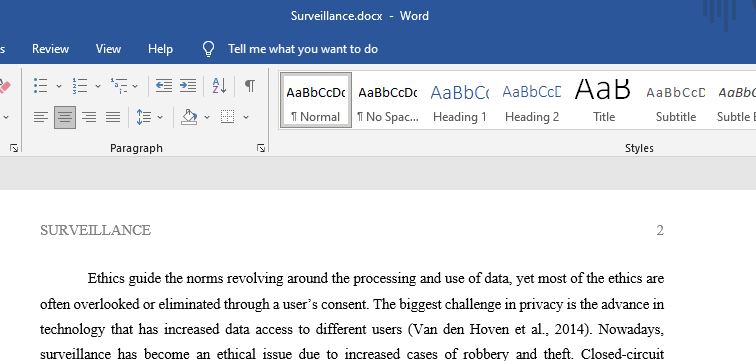Writing question on surveillance.
In the 1980’s, surveillance cameras blanketed banks and other significant institutions. Historically, these facilities recorded and stored the footage on-site. In the event of a break-in or robbery, security personnel could rewind the footage and provide it to law enforcement. With the inevitable cost reduction that comes from decades of industrial refinement, remote ‘security-style’ camera systems can now outfit an entire home for less than the cost of a gaming console.
Moreover, the addition of internet technology and the connectiveness of all these devices changes the previous surveillance model. Before, on-site professionals reviewed the footage when trouble appeared. We grew accustomed to these devices in our lives with this understanding. Now any camera may broadcast to the entire planet entirely wirelessly.
In this assignment, students shall individually research and write a paper addressing privacy violations and the Internet of Things (IoT). It consists of two major parts.
PART 1: INSECURE CAMERAS
Using your web browser, visit www.insecam.com (Links to an external site.). The site contains a directory of ‘filtered’ webcams without passwords. Theoretically, none of the cameras on this site should expose someone’s private home or appear to serve as only a spy camera. A moderation team deletes cameras that fail to meet its standards (Section 230 anyone?). Errors exists, however, and there is hysteresis in the system, so it remains far from foolproof.
The ‘open’ cameras on the website broadcast whatever falls in their vision (or earshot) indiscriminately on the internet. Anyone may visit the web address and, without entering any credentials, see and hear what the camera hears. In many cases, this poses little to no ethical dilemma. Hypothetically, a television studio may offer its viewers access to an open webcam for behind-the-scenes footage during their broadcast. Clearly, everyone in this scenario is aware of and consents to the camera’s presence.
Students shall explore the types of cameras available on the website and identify at least one that meets the student’s personal standards for being ethical. Describe the camera as well as why you feel it meets ethical requirements. Feel free to fall back on the ACM code, deontology, utilitarianism, or any other ethical concepts from our past to bolster your position. In addition to the ethical camera, each student shall find a camera that aggravates, annoys, or otherwise fails to meet the student’s individual ethical standards and write about it. Each student shall specify why it fails to meet their standards.
Entire categories of cameras may seem unethical to the student and can be used in place of a single unethical camera instance. Be sure to back up your position by tying back to ethical concepts we explored this semester. You may feel it is entirely unethical to have the ‘pet’ camera category, but you need to support this belief from a well-reasoned ethical position.
PART 2: INTERNET OF BROKEN THINGS
Having explored how the prevalence of cameras has diminished our privacy, students shall expand this by describing two other instances when an IoT device invaded someone’s privacy. For each instance, cite a news, journal, or magazine article describing the accidental exposure. For example, in the lecture I pointed to the Strava fitness application revealing the location and floorplans of US Military installations (https://www.independent.co.uk/news/world/americas/global-heat-map-us-military-bases-revealed-soldiers-gps-tracking-jogging-fitbit-strava-a8182826.html (Links to an external site.)).
Students shall handle each of the examples they provide in a fashion similar to the one used in Part 1.
Students must cite each article they reference using ACM, IEEE, MLA, or AMA citation styles and include a reference page (which does not count in your page total).
Delivery
Students shall submit a paper that sufficiently addresses the above topics on or before the due date. Although there is not a strict page requirement, your instructor struggles to see how anyone can address these points at the desired detail in less than two pages, but does not want anyone to exceed four pages (excluding references). Eleven point font spaced with 1.5 line spacing looks wonderful. Ultimately, playing font and spacing games to get a longer paper amounts to nothing here. The paper’s content determines its score, not its copy.
Grading
Ethical and Unethical cameras
- Describes cameras or categories (5 pts)
- Supports position with ethics (3 pts)
Internet of Broken Things
- Cites two sources for privacy invading IoT devices and describe them (5 pts)
- Supports position with ethics (2 pts)
Although not a Rhetoric and Writing course, this is an upper-division college course, so students should be able to write cohesive papers. Within each of the 5 point camera/IoT description, the grader may subtract points for poor style, grammar, or execution. Use proper punctuation and spelling.
————————————————————————————————————————
Please follow the instruction above
Answer preview:

word limit:883
